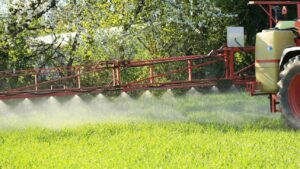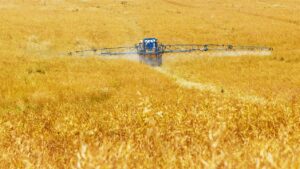A recent modeling study suggests that if glyphosate were banned, it could result in a rise in weed populations and a decline in the yields of certain crops, according to a press release from Rothamsted Research.
While such a ban could alleviate environmental risks tied to this herbicide, alternative weed control methods yield mixed results concerning their impact on the environment, food production, and profitability, although some methods exhibit potential benefits. Moreover, weed populations with developed resistance to non-glyphosate herbicides are not expected to be significantly impacted by the removal of glyphosate, despite the absence of alternative herbicidal control options.
“Our findings emphasize the need for careful consideration of trade-offs if a ban were to be enacted,” said Rothamsted’s Dr. Helen Metcalfe who led the study. “Glyphosate, the most widely used herbicide, is linked with environmental harm and possible human health issues, but it’s use is central to no-till farming approaches. Public pressure is now building for it to be replaced in agricultural systems. We wanted to find out what the implications of a ban might be.”
The treatment finds extensive application in arable farming. However, within regenerative systems aiming at enhancing soil health, glyphosate plays a crucial role in weed control within no-till stubbles, as well as in managing cover crops and leys. The environmental and health concerns linked with glyphosate might counterbalance some advantages of transitioning towards more sustainable systems that minimize tillage and incorporate cover crops. The research team simulated the effects of ceasing glyphosate usage and substituting it with alternative weed control methods within winter wheat arable systems commonly found in northwest Europe.
The release notes that crop rotations emphasizing spring cereals or grass leys for weed management enhanced arable plant diversity in comparison to simpler rotations reliant on glyphosate, albeit at the cost of reduced food output. Moreover, a rise in spring cropping amplified environmental hazards related to herbicides, given the elevated toxicity and bioavailability of chemicals commonly used in such crops. Stale seedbed techniques, like delayed drilling and choosing ploughing over minimum tillage, yielded diverse impacts on weed abundance, food production, and profitability. Among these techniques, ploughing emerged as the most effective alternative to glyphosate for long-term weed control, while still maintaining production levels and profitability.
“Integrated Weed Management with more use of cultural control methods offers the potential to reduce chemical use but is sensitive to seasonal variability and can also have some negative environmental and economic impacts,” said Metcalfe. “The uncertainty associated with the non-chemical approaches we tested supports the view that adoption of IWM requires multiple options adapted to the local environment. This will however require careful consideration and a strong founding in the principles of weed ecology and biology.”
In the study, incorporating more grass leys or spring cereals into the crop rotation inevitably resulted in a decline in food production, as high-yielding crops were replaced by less productive alternatives. While in certain cases, the additional benefits of these diversified systems may outweigh the loss of food production, there could be additional strategies to enhance productivity within these systems. For instance, integrating grazing animals into grass leys not only offers extra revenue streams but also potentially enhances soil structure and nutrient cycling.
The research team anticipated observing weed control benefits from adjusting the crop rotation, but these benefits did not consistently manifest in the simulations. It was expected that introducing crops with significantly different management techniques from typical winter cereals would lead to a decrease in weed abundance. This anticipation stemmed from the understanding that the management operations required for these alternative crops would favor a different weed community compared to the one adapted to winter cereals.
“Although we saw increased environmental risks related to herbicides used in spring crops, the benefits of spring crops in improving biodiversity in general are clear,” said Metcalfe. “For instance, overwinter stubbles from spring cropping provide conditions for the germination of crucial winter food sources for seed-eating birds. In addition, spring crops themselves can provide breeding habitats and food sources for farmland birds. It is therefore important to consider these trade-offs when implementing such a strategy on farm.”
Overall, the study team hope that the modelling exercise will encourage more farmers to experiment with alternative weed control strategies.













